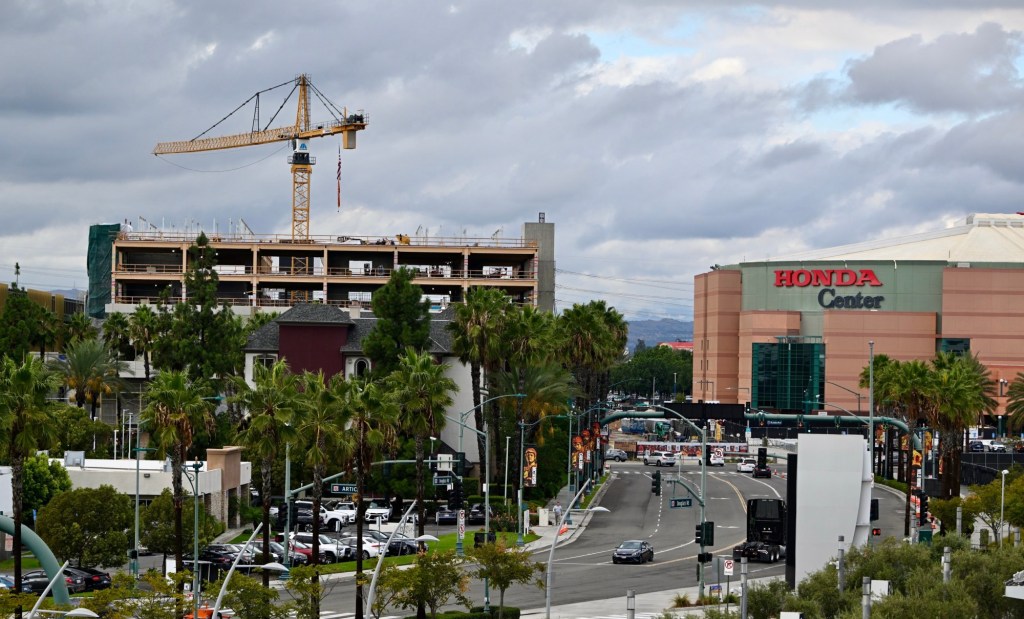
While the U.S. dodged earlier predictions this year of a mild recession, Cal State Fullerton economists say “thorny issues” remain related to inflation and “alarming” hiring conditions.
On Thursday, economists Anil Puri and Mira Farka made their predictions for 2026, with their outlook for this year falling short of more dire expectations forecast last year. A mild recession, which they previously predicted would land a year ago, was pushed to late 2025 — but a “gradual downshift” never came.
This year, the economists said the U.S. economy has shown “remarkable resilience,” “outperforming dire predictions, not just barely, but by a wide margin.”
The economists said they wouldn’t be surprised if the remainder of the year is marked by “a few more bumps, with payrolls weakening further as firms await clarity on trade deals, the government shutdown and overall consumer demand.”
Inflation also is expected to likely continue to “edge higher into the first quarter of next year, though we do not expect it to get out of hand, anticipating a peak of around 3.5%,” the economists said. Inflation has “yet to crest,” and “the labor market has yet to find its floor — though neither is expected to inflict as much pain as once feared.”
The current annual inflation rate for the U.S. was 3% for the year period ending in September. New inflation statistics published by the regional Consumer Price Indexes for September show an 3.5% inflation rate for Los Angeles and Orange counties. That’s the biggest cost-of-living bump in 16 months.
Also see: Affordable housing, cost of living among biggest worries for CSUF economists
The trade war that President Donald Trump’s administration launched in the spring did not have the “seismic shift” on inflation that everyone predicted, they explained. “Yet six months on, the overall inflation rate — though edging higher — has remained remarkably well-behaved, and the tariff effect strikingly muted.”
They explained this is because U.S. firms stockpiled “oodles of just about everything in the first quarter,” allowing them to sell from inventory rather than raise prices.
But those stockpiles are now being drawn down, and the debate over who ultimately bears the cost has flared up, they said.
While the uptick in inflation is unsettling, the recent news from the labor market is “downright alarming,” they said. The hiring rate has slipped below levels typical of a mid-cycle expansion, while the quits rate — a key gauge of worker confidence — has dropped to its lowest point in a decade, excluding the pandemic.
“The job-openings-to-unemployed ratio has slipped below 1 — meaning there are now fewer openings than job seekers — after holding above that threshold throughout the entirety of Trump’s first term,” they said.
Expensive housing
Beyond the labor market, California continues to grapple with its long-standing housing crisis. Housing remains the single largest expense for most residents, and home prices have soared as supply remains constrained, and the cost of ownership far exceeds that in much of the country.
In August 2025, the median price for a single-family home reached $1.39 million in Orange County, $930,700 in Los Angeles County, $625,000 in Riverside County, $503,000 in San Bernardino County, and $899,100 statewide. Since August 2019, these prices have risen by 71%, 48.3%, 48.8%, 59.7% and 45.6%, respectively.
While complex building regulations have long constrained construction, high interest rates have also weighed on activity. More recently, tariffs on Canadian lumber and restrictions on immigrant labor have further added to builders’ costs. In Southern California, average monthly building permits for private housing fell from 2,933 in 2015 to 2,130 in 2025 — a 27.4% decline.
Local highlights
— The Woods Center index of Orange County business sentiment — based on a quarterly survey of Orange County executives — shows business sentiment improving in both national and regional economies in the coming quarter. Rather than buoyant, the firms offered tempered responses.
For instance, 28% expect their sales to increase this quarter (down from 38% in the year-ago survey), while 51% anticipate little change (up from 42%) and 20% expect a decline (compared with 21%). The index — which rose to 74.4 from 68.6 in the previous quarter on a 100 point scale — reached its high level since early 2024.
— When asked about hiring plans, the survey found that 18% intend to expand their workforce (down from 30% a year ago), 67% expect no change (up from 58%), and 16% anticipate job cuts (up from 11%).
Like the national picture, firms appear to be scaling back hiring intentions but not firing en masse, with roughly two-thirds planning to maintain current staffing levels.



